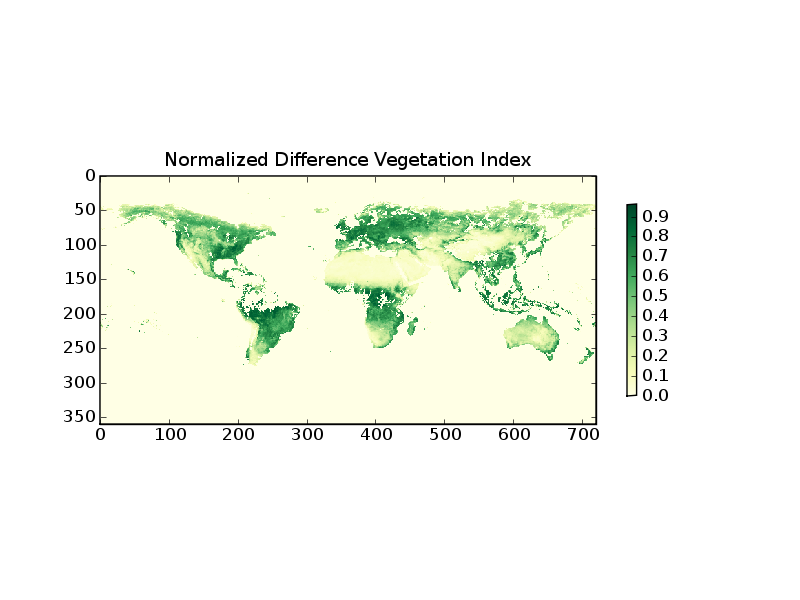|
Size: 2104
Comment:
|
Size: 2350
Comment:
|
| Deletions are marked like this. | Additions are marked like this. |
| Line 40: | Line 40: |
| [[http://pysclint.sourceforge.net/pyhdf/|pyhdf]] is a python interface to the NCSA HDF4 library. The interface is easy to use. | [[http://pysclint.sourceforge.net/pyhdf/|pyhdf]] is a python interface to the NCSA HDF4 library. |
| Line 42: | Line 42: |
| The following example demonstrates how to use the pyhdf module for reading level-3 data from the [[http://eosweb.larc.nasa.gov/PRODOCS/misr/level3/download_data.html|MISR instrument]] | The following example demonstrates how to read [[http://eosweb.larc.nasa.gov/PRODOCS/misr/level3/download_data.html|level-3 data]] from the [[http://www-misr.jpl.nasa.gov/|Multi-angle Imaging Spectral Radiometer (MISR)]] on the [[http://terra.nasa.gov/|Terra Satellite]] |
| Line 48: | Line 48: |
#http://eosweb.larc.nasa.gov/PRODOCS/misr/level3/download_data.html |
|
| Line 57: | Line 55: |
| colorbar() | colorbar(shrink=0.5) |
| Line 59: | Line 57: |
| savefig('ndvi.png',dpi=100) | |
| Line 61: | Line 58: |
| attachment:ndvi.png | Line 5 opens the HDF file object. line 6 prints the keywords of the included datasets. From this one can identify the keyword for the desired parameter. Line 7 reads the data in a SciPy array. Line 8 selects the negative (bad and missing) data and sets them to zero. {{attachment:ndvi.png}} |
Input/Output
This lesson deals with the ways of reading and writing data
Basic Python
The file object can be used for reading and writing plain text as well as unformatted binary data. The following code writes a message in the file with the name out.txt, reads and print the data
write() writes a string to the file
read() reads complete file
read(N) reads N bytes
readlines() reads the file with linebreaks
readline() reads only the next line
NumPy/SciPy
HDF
NASA's standard file format, the http://hdf.ncsa.uiuc.edu/index.html is a self-describing data format. HDF files can contain binary data and allow direct access to parts of the file without first parsing the entire contents.
The HDF versions 4 and 5 are not compatible.
Different modules are available for reading and writing HDF files
pyhdf
pyhdf is a python interface to the NCSA HDF4 library.
The following example demonstrates how to read level-3 data from the Multi-angle Imaging Spectral Radiometer (MISR) on the Terra Satellite
1 from scipy import array
2 from pylab import imshow,colorbar,title,savefig
3 from pyhdf.SD import SD
4
5 f=SD('MISR_AM1_CGLS_MAY_2007_F04_0025.hdf')
6 print f.datasets().keys()
7 data=array(f.select('NDVI average').get())
8 data[data<0]=0
9
10 imshow(data,interpolation='nearest',cmap=cm.YlGn)
11 colorbar(shrink=0.5)
12 title('Normalized Difference Vegetation Index')
Line 5 opens the HDF file object. line 6 prints the keywords of the included datasets. From this one can identify the keyword for the desired parameter. Line 7 reads the data in a SciPy array. Line 8 selects the negative (bad and missing) data and sets them to zero.

netCDF
